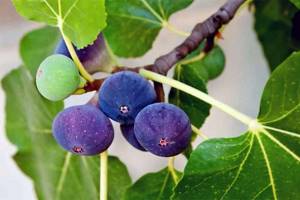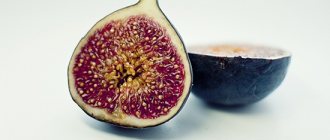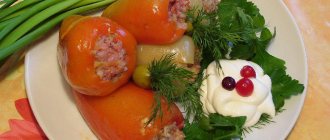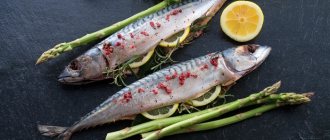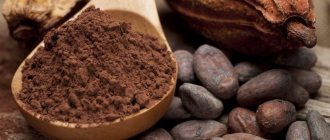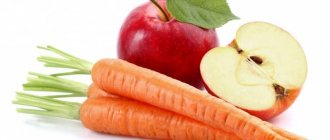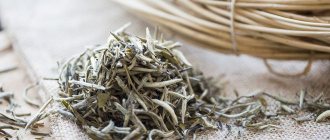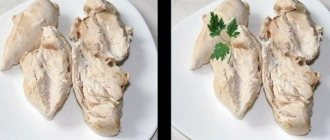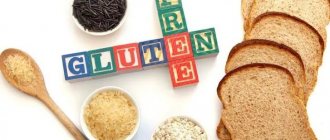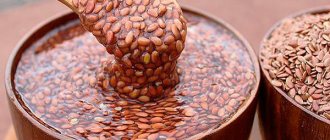In this article I will tell you about the benefits of dried figs for the body. There is already a lot of information on this topic in RuNet, but to write this article I used Western sources, so I hope you will find something new for yourself here. In addition to describing the health benefits of dried figs, I will also give general information about their composition (vitamins, minerals, other substances), calorie content, glycemic index and some other features.
If you would like to purchase this delicious dried fruit, guaranteed to be unprocessed and sun dried, check out my review of organic dried figs. Only this can bring maximum benefit to the body.
I'll start with the composition.
Biochemical composition and calorie content of dried figs
The fruits of the fig tree quickly fill you up due to their high nutritional value and calorie content: 100 g of dried figs add 214 kcal.
Dried figs lead in the content of potassium, magnesium, phosphorus, iron, calcium, and iodine. In terms of potassium content, figs are second only to nuts.
There are a lot of vitamins in figs - C, B1, B2, B6, PP.
Equally important are the unsaturated fats omega-3 and omega-6, gallic and syringic acid, fiber, pectins, enzymes and proteins present in dried figs.
Is it possible during pregnancy and breastfeeding?
Folic acid is important for pregnant women because it promotes normal fetal development and maintains the integrity of the placenta. In addition, it helps saturate tissues with oxygen and helps overcome anemia that a woman can develop during pregnancy.
Folic acid is also found in foods such as raw beets, lemon, feijoa, pearl barley, avocado, cauliflower, mussels, chicken liver, black rice.
The berry has laxative properties, its consumption significantly reduces the possibility of constipation during pregnancy.
Gynecologists recommend that pregnant women eat figs because they contain much more minerals than most fruits and vegetables. Calcium, iron, potassium and zinc are also important for the intrauterine development of the fetus - all of this is found in the fruits of the fig tree.
The berry is also a source of vitamin B6, fiber and a proteolytic enzyme, which supports metabolism and thus alleviates morning sickness.
Sweets (sweets, cream, chocolate) are not recommended for nursing mothers. To meet the need for sugars, doctors recommend including dried figs in your diet.
What are the benefits of dried figs?
Fig fruits, which contain many vitamins and minerals, are effective against a wide variety of diseases:
- Fiber improves the functioning of the digestive system, promotes the removal of accumulated toxins and toxic substances.
- Strengthening bone tissue.
- Stimulating creative thinking, activating mental activity.
- Relieving inflammation in the oral cavity, accelerating the treatment of sore throat (dried figs boiled in milk are especially effective).
- The laxative effect of figs will relieve constipation.
- The antibacterial effect of dried figs and the promotion of sweating helps reduce fever.
- The diuretic effect helps the kidneys work and helps reduce blood pressure, which will be useful for hypertension.
- The high content of potassium and other minerals in dried figs strengthens blood vessels, the heart, and helps relieve vascular spasms.
- Prevents the formation and improves the resorption of already formed blood clots due to its blood thinning effect.
How to dry figs in the dryer yourself: step-by-step recipe
If your household has a useful appliance like an electric dryer, you can prepare your own dried figs. In a dry and cool place in a hermetically sealed jar, these dried fruits can be stored for several years.
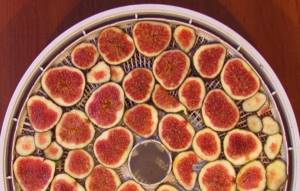
How to cook:
- Take 3 kg of fresh and juicy figs, wash them well under running water and lay them out on kitchen towels (in one layer) to dry.
- After the fruits have dried, cut them into rings 0.5 cm thick and place them on electric dryer trays in one layer. We place the fig rings tightly, one to one, so that as many as possible fit on one tray. Three kilograms of berries cut into rings will take up approximately 6 trays in a standard electric dryer. About half a kilogram will fit on one baking sheet.
- The trays with the berries laid out on them and prepared for drying are placed in an electrical appliance, after which the dryer is closed and the time and temperature for the drying process are set on the timer.
- The most optimal temperature for drying figs is 55 °C. We set this temperature on the electric dryer. At this time, the temperature in the room where the electrical appliance is located should be within 22 °C. The approximate cooking time for dried figs is nine hours. Cooking time may vary, it will depend on the juiciness of the starting material.
- Well and properly dried berries will lose about 4 times their weight. The weight of the final product (obtained from 3 kg) will range between 700-750 grams.
- Leave the prepared dried fruits taken out of the electric dryer for 3-4 hours to cool completely, after which we pour them into a hermetically sealed container, close them and store them in a cool and dark place.
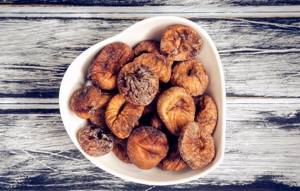
Harm from dried figs
The invaluable benefits of dried figs for the body cannot be compared with the potential harm that consumption of dried figs can bring. However, there are exceptions in which you need to reduce your consumption of figs or completely exclude them from your menu.
First of all, figs contain a lot of sugars, so if you have diabetes, obesity and a tendency to quickly gain weight, this product, which is also quite high in calories, is contraindicated. In other cases, dried fruit should be consumed in moderate doses, excluding overeating.
Dried figs are not recommended for intestinal diseases and pancreatitis.
If you have a fairly long trip ahead, it is better not to take figs with you and avoid consuming them on the eve of departure. Be aware of its laxative effect.
Since fig tree has the ability to reduce blood clotting, this makes it unsuitable for people with poor blood clotting.
living-health.ru
What kind of fruit
There are several other names for this berry: fig, fig, wine berry. She came to us from India and Asia Minor. In total, there are more than 400 species of this plant.
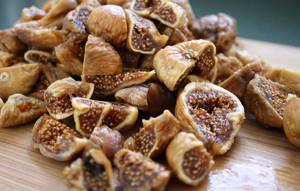
Fig trees are widespread in the Middle East, Mediterranean, Caucasus, Central Asia and Crimea. In Russia, figs grow and bear fruit in the south.
Fig tree fruit has a unique sweet flavor, soft fruit texture, and many slightly crunchy edible seeds.
The fresh fruit is a delicate and perishable berry, so it is dried and dried to preserve it for a longer period. Drying results in sweet and nutritious dried fruits that can be used all year round.
In dried figs, the sweetness of the pulp increases several times compared to fresh ones.
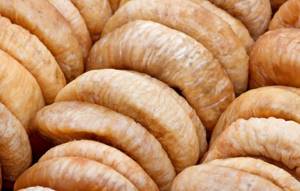
There are different types and varieties of figs, with different fruit colors and different pulp textures.
Fig tree fruits can be eaten either peeled or unpeeled, depending on the thickness of the skin and individual preference. Since the pulp of a ripe fruit is soft and sticky, it is quite difficult to peel these berries.
Did you know? Some researchers believe that
in the Bible it is figs that are mentioned as a forbidden fruit. It’s not for nothing that Adam and Eve, ashamed of their nakedness,
Foods that loosen stools
Easing the stomach is sometimes as necessary as strengthening the stool. Constipation in children is not uncommon.
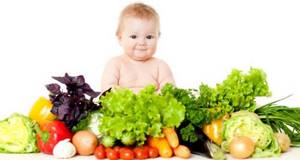
At these moments, the unknowing mother begins to feed the baby what the relatives advise, who are not always right.
In order not to spoil the digestive system, you should know which drinks and foods can have a laxative effect.
When the intestines are weakened, their peristalsis increases, causing the ability to quickly absorb foods to be temporarily lost.
Below is a table describing the categories of stool loosening products:
| Product category | Kinds |
| Beverages | Kissel made from natural juices can relax the stomach. It's better to make it yourself than to buy a store-bought version. |
| Coffee does not have pronounced properties to cause the desire to empty the stomach. However, due to individual characteristics, with proper nutrition, the effect will be positive | |
| Boiled rose hips, made from seeds and berries, will help solve constipation problems | |
| Milk can cause loose stools even with severe constipation | |
| Fruits | Figs will help in treating intestinal obstruction. By consuming it daily you can forget about constipation forever. |
| A peach grown in favorable regions will help the child empty his intestines. This solution is suitable for mothers of babies experiencing colic and bloating. Complementary feeding in the form of peach puree will become a panacea | |
| Fresh apricots will have a laxative effect if consumed unripe. Dried apricots will help solve the problem in the same way as prunes and dates. Fresh plums have the same properties, but you need to use them in moderation | |
| Berries | Watermelon and its juice are useful for people suffering from constipation. Please note: if you eat the pulp located close to the crusts, there is a chance to cleanse the intestines |
| Ripe blackberries have laxative properties. It is not recommended to use it in large quantities for people suffering from high stomach acidity. | |
| Vegetables | Pumpkin has a dual effect on the intestines. Depending on the individual characteristics of the body, it can strengthen or weaken the stomach |
| Broccoli is given to infants as complementary foods and to relieve bloating. |
Lemon slightly weakens the stomach, but you should not overdo it with this product - if consumed constantly on an empty stomach, lemon can cause gastritis.
Now, knowing which foods strengthen the stool and which cleanse the intestines, you can independently solve the problem of constipation and bloating.
womans7.com
I was looking for information on the Internet on the topic, and found a couple of interesting lists, collected it all in a “heap” and now I’m sharing it (attention, I am not responsible for the authenticity of the information)
LIST No. 1 (Do's and Don'ts for constipation)
Raw vegetables, fruits and herbs You can eat: cabbage, tomato, cucumber, turnip, carrots (preferably with an apple), radish, radish, garlic, onion, fresh fennel tubers; plum, orange (the juice is laxative!), apricot, peach, mango, fig, papaya, date; greens (especially dill, spinach), salad With caution: apples, some varieties of pears, bananas (preferably with an apple) Not to eat: apples (quickly darkening when cut), pomegranate (the juice is very strong!), quince, persimmon (especially not overripe )
Boiled and baked vegetables and fruits You can eat: beets (especially on an empty stomach), pumpkin, zucchini, eggplant, turnips, corn; baked apple With caution: legumes, potatoes (it is better to pre-soak in water for 2-3 hours) Not to eat: mashed potatoes, carrots
Salted, pickled and canned vegetables and fruits You can eat: sauerkraut (non-sour), pickled cabbage, pickles, canned bell peppers, seaweed; olives
Dried fruits You can eat: prunes, raisins (light colors) With caution: dried apricots You can’t eat: pear
Berries You can eat: fresh blueberries (mild laxative), lingonberries (raw), strawberries, strawberries, cherries (raw), viburnum (laxative), gooseberries, red rowan, rose hips, olives; melon With caution: grapes Do not eat: blueberry decoction (strongly strong!), black currant
Cereals You can eat: buckwheat, oatmeal (in water, preferably from whole grains), pearl barley, dark rice With caution: barley (especially gruel) You can’t eat: white rice (especially gruel), semolina
Nuts, seeds and grains You can eat: pistachio, pine nut, hazelnut; sesame oil (weakens); wheat cereals, bran Not allowed: walnuts, sesame decoction
Meat and fish You can eat: lean meat and fish (boiled or baked), turkey, rabbit, chicken With caution: lamb You can’t eat: fatty meats and fish, lamb, duck, goose, meatballs, cutlets, soufflé
Chicken eggs Be careful: yolk Not allowed: scrambled eggs
You should not eat mushrooms if you are constipated from heavy protein foods.
Soups You can eat: borscht, cabbage soup made from fresh and sauerkraut, rassolnik With caution: pea soup, mushroom soup, fatty fish soup You can’t eat: fatty chicken broth, milk vermicelli
Oils You can eat: sunflower, corn, olive, sesame You can’t eat: butter
Seasonings You can eat: cumin, coriander, fennel (fat reduction); turmeric, black pepper
Products made from flour You can eat: wholemeal rye bread, grain bread, bread with bran You can’t eat: pasta, pasta, white and black bread, fresh baked goods, crackers, cookies
Dairy and fermented milk products You can eat: 1st day kefir, yogurt, acidophilus yogurt; milk (low-fat), sour cream (low-fat) With caution: kefir 2 days; cottage cheese with the addition of herbs (for example, dill) You cannot eat: kefir for the 3rd (and further) day, yogurt for 2 - 3 days; milk (fat), sour cream (fat), cottage cheese (fat)
Drinks You can drink: raw water, prune infusion (weakens), rosehip infusion (especially on an empty stomach), cranberry juice, herbal infusions (mint, fennel) With caution: juices (however, relief from carrot juice, freshly prepared cherry, plum, peach is possible ) You cannot drink: jelly, tea (any), cocoa, sour juices, decoction of raspberry leaves
Confectionery You can eat: honey, cane sugar You can’t eat: refined sugar, sweets
LIST No. 2 (Laxative products)
Fresh raw fruits Fruits such as bananas, apples, melons and various berries contain a lot of juice, which helps the body flush out toxins and waste.
and is also easy to digest and contains many antioxidants, dietary fiber and vitamins. Bananas. A large amount of fiber creates a laxative effect and better absorption. In addition, they are high in potassium, which helps restore electrolyte balance in the gastrointestinal tract. They also contain a lot of fruit oligosaccharides, which help our intestinal microflora work properly. We are talking about overripe soft bananas. Apples. They contain a lot of pectin, which stimulates the intestines and improves stool. Melon. This is a great way to start the day as it is one of the easiest foods to digest. They almost immediately enter the intestines for digestion, but if they are eaten after other foods, they begin to quickly decompose and ferment. Berries. A very large amount of antioxidants makes them an excellent health aid. I recommend eating the following berries for colon cleansing: blueberries, strawberries, blueberries, cranberries, blackberries, goji berries, acai berries and cherries. Prunes A recognized natural laxative, prunes are rich in antioxidants, vitamin A, potassium, iron and fiber. In addition, it helps the intestinal microflora, making it an excellent addition to a cleansing diet. Aloe Vera This is one of the oldest and most popular medicinal plants known to man. Most of the aloe leaves are filled with gel, which contains about 99 percent water. And 1 percent contains 75 scientifically known nutrients, including 20 minerals, 18 amino acids in 200 active compounds and 12 vitamins, as well as many phytonutrients, enzymes and, of course, water. Aloe Vera can be consumed in juice form on a daily basis. Hot Red Peppers, Ginger and Turmeric If you cook food that contains a lot of spices, such as hot peppers, ginger and turmeric, then you can help your digestion as these are excellent laxative foods. For example, pepper stimulates the gastrointestinal tract, increasing the production of gastric enzymes. Fresh ginger or in the form of tea is considered one of the best foods for regulating digestion, and turmeric is an excellent seasoning for the liver. It helps cleanse it by releasing enzymes that actively flush out carcinogens from the body. Citrus fruits Lemons, oranges and limes in particular are excellent cleansing foods. They flush out toxins and help with enzymatic processes. Raw vegetables They are rich in fiber and help regulate peristalsis. Stock up on produce such as onions, carrots, asparagus, broccoli, cauliflower, cabbage, Brussels sprouts, garlic, beets and herbs. Try to eat more vegetable salads, Korean carrots and sauerkraut. Tomatoes Tomatoes are an excellent detoxifying food that also contains a lot of vitamins C, A and K. In addition, they provide about 10 percent of your daily dietary fiber needs and are rich in lycopene, an antioxidant that protects us from colon and prostate cancer. . It is better to eat homemade or country tomatoes. Omega-3 fatty acids Found in flaxseed, avocado and olive oil, they act as natural laxatives and flush out toxins. These products lubricate the intestinal walls and absorb harmful substances onto themselves, preventing them from entering the body. Leafy Green Vegetables Stock your refrigerator with seaweed, wheatgrass, kale, spinach, dandelion greens, alfalfa, mustard greens, endive, arugula and other types of green leafy vegetables. Why? They have a laxative effect and are high in fiber, calcium, folic acid, vitamins K and C, as well as magnesium and other nutrients essential for digestion and good health. In addition, greens help increase the production of bile, which removes waste from internal organs and blood. Avocados Avocados are jam-packed with healthy nutrients, including fiber, potassium, vitamin K and folic acid. Eating at least 1 avocado per day will provide 30 percent of your daily fiber requirement. In addition, avocado contains lutein (a carotenoid with vitamin E), magnesium and monounsaturated fats. Avocado also improves skin tone and increases the absorption of nutrients from other foods. Raw Seeds and Nuts Include foods such as flax seeds, pumpkin seeds, almonds, walnuts, sesame seeds, pine nuts and sunflower seeds in your diet. All of them are rich in fiber, vitamin E, protein, zinc and other nutrients. Beans, peas and other legumes are low in fat and cholesterol and are rich in fiber and protein. Great product!
Don't forget to drink plenty of water Don't forget about regular drinking water as one of the best natural laxatives to relieve constipation. Drink 8 glasses of clean water a day, but not from the tap! This is very important to moisturize the intestines and regulate their peristalsis.
LIST No. 3 (Products that fasten)
To treat diarrhea, diet is important. Meals should be fractional, and all dishes should be steamed or boiled. It is necessary to exclude spicy, salty, fried and smoked foods, carbonated and alcoholic drinks, canned food, coffee and chocolate from the diet. Instead, you need to eat those foods that strengthen the stool: Among the foods that help in strengthening the stool are lean meats - beef, chicken and rabbit. The same can be said about lean types of fish. Porridges and decoctions are especially good at fixing stool. Rice porridge, buckwheat or oatmeal should be cooked in water. You can eat low-fat cottage cheese, boiled eggs or baked potatoes. Mucous soups cooked in low-fat broth also strengthen the stool; you can add crackers there. Pomegranate infusion will help strengthen the stomach. To prepare it, use pomegranate peel, which is poured with boiling water and left to infuse for 15 minutes. You need to drink it three times a day, several sips. What foods strengthen the stool, besides the above? Strong tea leaves, black currants or persimmons contain tannins, which also strengthen the stool. For diarrhea, it is necessary not only to consume foods that strengthen the stool, but also absorbents that remove pathogenic bacteria, toxins, viruses, and intestinal gases from the body. And to prevent dehydration, drinking plenty of fluids is recommended.
forum.roditeli.ua
LIST No. 1 (Do's and Don'ts for constipation)
Raw vegetables, fruits and herbs You can eat: cabbage, tomato, cucumber, turnip, carrots (preferably with an apple), radish, radish, garlic, onion, fresh fennel tubers; plum, orange (the juice is laxative!), apricot, peach, mango, fig, papaya, date; greens (especially dill, spinach), salad With caution: apples, some varieties of pears, bananas (preferably with an apple) Not to eat: apples (quickly darkening when cut), pomegranate (the juice is very strong!), quince, persimmon (especially not overripe )
Boiled and baked vegetables and fruits You can eat: beets (especially on an empty stomach), pumpkin, zucchini, eggplant, turnips, corn; baked apple With caution: legumes, potatoes (it is better to pre-soak in water for 2-3 hours) Not to eat: mashed potatoes, carrots
Salted, pickled and canned vegetables and fruits You can eat: sauerkraut (non-sour), pickled cabbage, pickles, canned bell peppers, seaweed; olives
Dried fruits You can eat: prunes, raisins (light colors) With caution: dried apricots You can’t eat: pear
Berries You can eat: fresh blueberries (mild laxative), lingonberries (raw), strawberries, strawberries, cherries (raw), viburnum (laxative), gooseberries, red rowan, rose hips, olives; melon With caution: grapes Do not eat: blueberry decoction (strongly strong!), black currant
Cereals You can eat: buckwheat, oatmeal (in water, preferably from whole grains), pearl barley, dark rice With caution: barley (especially gruel) You can’t eat: white rice (especially gruel), semolina
Nuts, seeds and grains You can eat: pistachio, pine nut, hazelnut; sesame oil (weakens); wheat cereals, bran Not allowed: walnuts, sesame decoction
Meat and fish You can eat: lean meat and fish (boiled or baked), turkey, rabbit, chicken With caution: lamb You can’t eat: fatty meats and fish, lamb, duck, goose, meatballs, cutlets, soufflé
Chicken eggs Be careful: yolk Not allowed: scrambled eggs
You should not eat mushrooms if you are constipated from heavy protein foods.
Soups You can eat: borscht, cabbage soup made from fresh and sauerkraut, rassolnik With caution: pea soup, mushroom soup, fatty fish soup You can’t eat: fatty chicken broth, milk vermicelli
Oils You can eat: sunflower, corn, olive, sesame You can’t eat: butter
Seasonings You can eat: cumin, coriander, fennel (fat reduction); turmeric, black pepper
Products made from flour You can eat: wholemeal rye bread, grain bread, bread with bran You can’t eat: pasta, pasta, white and black bread, fresh baked goods, crackers, cookies
Dairy and fermented milk products You can eat: 1st day kefir, yogurt, acidophilus yogurt; milk (low-fat), sour cream (low-fat) With caution: kefir 2 days; cottage cheese with the addition of herbs (for example, dill) You cannot eat: kefir for the 3rd (and further) day, yogurt for 2 - 3 days; milk (fat), sour cream (fat), cottage cheese (fat)
Drinks You can drink: raw water, prune infusion (weakens), rosehip infusion (especially on an empty stomach), cranberry juice, herbal infusions (mint, fennel) With caution: juices (however, relief from carrot juice, freshly prepared cherry, plum, peach is possible ) You cannot drink: jelly, tea (any), cocoa, sour juices, decoction of raspberry leaves
Confectionery You can eat: honey, cane sugar You can’t eat: refined sugar, sweets
LIST No. 2 (Laxative products)
Fresh raw fruits Fruits such as bananas, apples, melons and various berries contain a lot of juice, which helps the body flush out toxins and waste. They are also easy to digest and contain many antioxidants, dietary fiber and vitamins. Bananas. A large amount of fiber creates a laxative effect and better absorption. In addition, they are high in potassium, which helps restore electrolyte balance in the gastrointestinal tract. They also contain a lot of fruit oligosaccharides, which help our intestinal microflora work properly. We are talking about overripe soft bananas. Apples. They contain a lot of pectin, which stimulates the intestines and improves stool. Melon: This is a great way to start the day as it is one of the easiest foods to digest. They almost immediately enter the intestines for digestion, but if they are eaten after other foods, they begin to quickly decompose and ferment. Berries. A very large amount of antioxidants makes them an excellent health aid. I recommend eating the following berries for colon cleansing: blueberries, strawberries, blueberries, cranberries, blackberries, goji berries, acai berries and cherries. Prunes A recognized natural laxative, prunes are rich in antioxidants, vitamin A, potassium, iron and fiber. In addition, it helps the intestinal microflora, making it an excellent addition to a cleansing diet. Aloe Vera This is one of the oldest and most popular medicinal plants known to man. Most aloe leaves are filled with gel, which contains about 99 percent water. And 1 percent contains 75 scientifically known nutrients, including 20 minerals, 18 amino acids in 200 active compounds and 12 vitamins, as well as many phytonutrients, enzymes and, of course, water. Aloe Vera can be consumed in juice form on a daily basis. Hot Red Peppers, Ginger and Turmeric If you cook food that contains a lot of spices, such as hot peppers, ginger and turmeric, then you can help your digestion as these are excellent laxative foods. For example, pepper stimulates the gastrointestinal tract, increasing the production of gastric enzymes. Fresh ginger or in the form of tea is considered one of the best foods for regulating digestion, and turmeric is an excellent seasoning for the liver. It helps cleanse it by releasing enzymes that actively flush out carcinogens from the body. Citrus fruits Lemons, oranges and limes in particular are excellent cleansing foods. They flush out toxins and help with enzymatic processes. Raw vegetables They are rich in fiber and help regulate peristalsis. Stock up on produce such as onions, carrots, asparagus, broccoli, cauliflower, cabbage, Brussels sprouts, garlic, beets and herbs. Try to eat more vegetable salads, Korean carrots and sauerkraut. Tomatoes Tomatoes are an excellent detoxifying food that also contains a lot of vitamins C, A and K. In addition, they provide about 10 percent of your daily dietary fiber needs and are rich in lycopene, an antioxidant that protects us from colon and prostate cancer. . It is better to eat homemade or country tomatoes. Omega-3 fatty acids Found in flaxseed, avocado and olive oil, they act as natural laxatives and flush out toxins. These products lubricate the intestinal walls and absorb harmful substances onto themselves, preventing them from entering the body. Leafy Green Vegetables Stock your refrigerator with seaweed, wheatgrass, kale, spinach, dandelion greens, alfalfa, mustard greens, endive, arugula and other types of green leafy vegetables. Why? They have a laxative effect and are high in fiber, calcium, folic acid, vitamins K and C, as well as magnesium and other nutrients essential for digestion and good health. In addition, greens help increase the production of bile, which removes waste from internal organs and blood. Avocados Avocados are jam-packed with healthy nutrients, including fiber, potassium, vitamin K and folic acid. Eating at least 1 avocado per day will provide 30 percent of your daily fiber requirement. In addition, avocado contains lutein (a carotenoid with vitamin E), magnesium and monounsaturated fats. Avocado also improves skin tone and increases the absorption of nutrients from other foods. Raw Seeds and Nuts Include foods such as flax seeds, pumpkin seeds, almonds, walnuts, sesame seeds, pine nuts and sunflower seeds in your diet. All of them are rich in fiber, vitamin E, protein, zinc and other nutrients. Beans, peas and other legumes are low in fat and cholesterol and are rich in fiber and protein. Great product!
Don't forget to drink plenty of water Don't forget about regular drinking water as one of the best natural laxatives to relieve constipation. Drink 8 glasses of clean water a day, but not from the tap! This is very important to moisturize the intestines and regulate their peristalsis.
LIST No. 3 (Products that fasten)
To treat diarrhea, diet is important. Meals should be fractional, and all dishes should be steamed or boiled. It is necessary to exclude spicy, salty, fried and smoked foods, carbonated and alcoholic drinks, canned food, coffee and chocolate from the diet. Instead, you need to eat those foods that strengthen the stool: Among the foods that help in strengthening the stool are lean meats - beef, chicken and rabbit. The same can be said about lean types of fish. Porridges and decoctions are especially good at fixing stool. Rice porridge, buckwheat or oatmeal should be cooked in water. You can eat low-fat cottage cheese, boiled eggs or baked potatoes. Mucous soups cooked in low-fat broth also strengthen the stool; you can add crackers there. Pomegranate infusion will help strengthen the stomach. To prepare it, use pomegranate peel, which is poured with boiling water and left to infuse for 15 minutes. You need to drink it three times a day, several sips. What products strengthen the chair, besides the above? Strong tea leaves, black currants or persimmons contain tannins, which also strengthen the stool. For diarrhea, it is necessary not only to consume foods that strengthen the stool, but also absorbents that remove pathogenic bacteria, toxins, viruses, and intestinal gases from the body. And to prevent dehydration, drinking plenty of fluids is recommended.
www.baby.ru
Stool Firming Products
- Green bananas absorb fluid in the intestinal tract and thus slow down peristalsis. Constipation is often a consequence of insufficient water intake - there is already so little liquid, how can you dilute the stool? Therefore, you should start drinking more water to avoid the risk of constipation.
- Mashed potatoes, semolina porridge and white rice contain a lot of starch, their consumption helps to consolidate the stool.
- Kissels (especially from chokeberry, bird cherry, dried blueberries), cream soups and slimy soups (with cereal decoctions) are the same story.
- Mashed, highly crushed foods, viscous porridges and strong broths contribute to constipation.
- Hot and warm dishes reduce the motor activity of the intestines, causing relaxation of its walls.
- Applesauce strengthens, unlike raw apples and pears, which are good sources of pectin.
- Products made from premium flour, pasta, and hot bread are absorbed too quickly in the gastrointestinal tract due to the fact that the outer shell of the grain has been removed. For intestinal health and good peristalsis, fiber is necessary, due to which the natural movement of feces occurs outward. No fiber - no peristalsis...
- Not fresh kefir helps strengthen the intestines (meaning kefir 2-3 days old).
- Dried blueberries, blueberry tea, blueberry jams, preserves and mousses contain a lot of tannins, which have an astringent property.
- Cocoa, strong tea, coffee, natural red wines, like blueberries, contain a substance called tannin. This substance actively inhibits all processes in the intestines.
- Fried, smoked foods, salted fish, sausages, cheese, boiled milk are also foods that strengthen the stool.
Unlike other dairy products, milk, especially in adults, is an active stimulator of bloating and constipation. Complete digestion of milk occurs thanks to an enzyme such as lactose. With age, the gastrointestinal tract's ability to produce this enzyme is lost.
- Mushrooms, mustard, radishes, horseradish, cakes, pies and confectionery products that are cooked in soda with the addition of sugar and margarine.
In order not to put you into a prolonged depression about what to eat if you can’t eat anything, it would be correct, I think, to describe those foods that have a laxative effect. The main task of such products is to stimulate intestinal activity, which helps normalize stool.
fitdeal.ru
For those who struggle with excess weight
The beneficial properties of dried figs for weight loss are also widely known. It has been established that its ripe fruits contain many ballast substances that reduce the feeling of hunger. In addition, its grains have an effect on the human body identical to that of fiber on the intestines. They improve digestion and prevent constipation.
In order to lose extra pounds, you need to eat a couple of figs at least 2-3 times a week instead of an afternoon snack or dinner. Moreover, nutritionists recommend eating it separately without adding other foods.
Thus, dried figs are an excellent assistant in the fight against excess weight.
